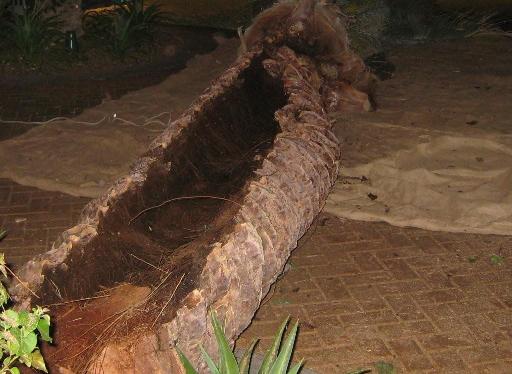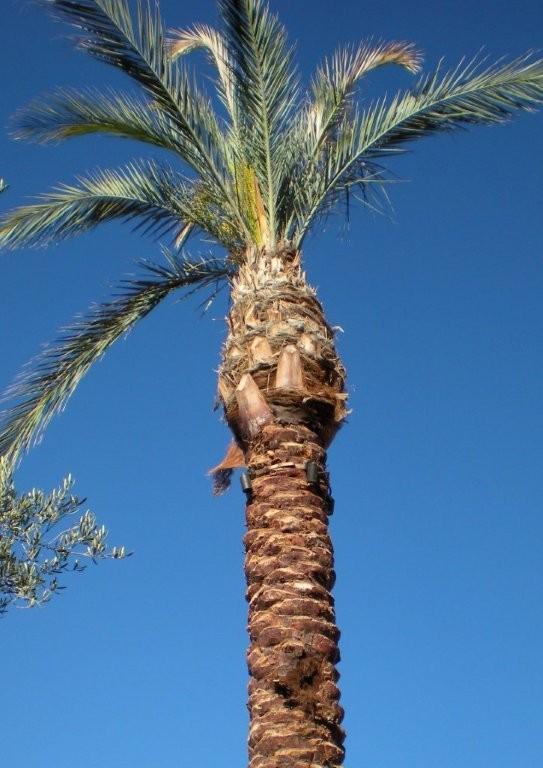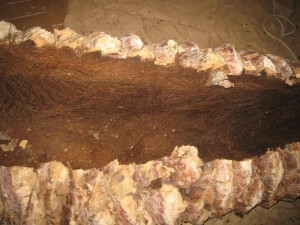This month’s ACLP class series is Tree and Shrub Pruning and it reminded me of all the reasons why we should hire a professional to prune our trees. Trees are often the forgotten element in our yards. Sure they provide us shade and refuge from the scorching summer sun, but who calls their tree care professional for an annual health assessment? Generally most of my calls are for ailing trees, not the healthy ones. We typically don’t notice the healthy growing trees until they fall in a windstorm, show symptoms of a disease or pest or begin changing in appearance.

Here are the top reasons why I get called to properties:
1. Change in growth: yellowing foliage, wilting or defoliation
- Nutritional disorders, usually due to poor tree choice for the site= queen palms… when will everyone learn: They. Just. Do. Not. Grow. Well. Here. Okay, I’m off my soapbox.
- Too much or too little water: too much water leaches nutrients, reduces necessary oxygen to roots, slows growth and can make conditions conducive for root diseases. Too little water can also reduce growth, cause wilting, leaf tip burn due to the high concentration of salt in the soil.
- Disease or pests: while we we don’t have many plant diseases in our arid region, there are a dozen or so pathogens in our soil that can impact plant health or kill a plant. We also have a number of nasty pests that can wreak havoc on select plants. The top disease I diagnose is Texas Root Rot and the pests I most frequently encounter are the Agave Weevil or the Palo Verde Borer.

- Pine trees declining due to insufficient irrigation after turf to granite conversion.
2. Death of tree limbs/ tip dieback
- Many times there has been a change on the property, construction damage or root disruption being the biggest culprit
- Plant diseases can also cause tip dieback
- Incorrect soil grade, either from the tree being placed too deeply in the hole at planting or from soil being added to the existing soil, making the grade higher. These are very common mistakes made in the landscape and unfortunately trees may not show any signs of stress for many years, making it difficult to make an initial diagnosis. That’s why I most often keep digging, until I find the right answer.
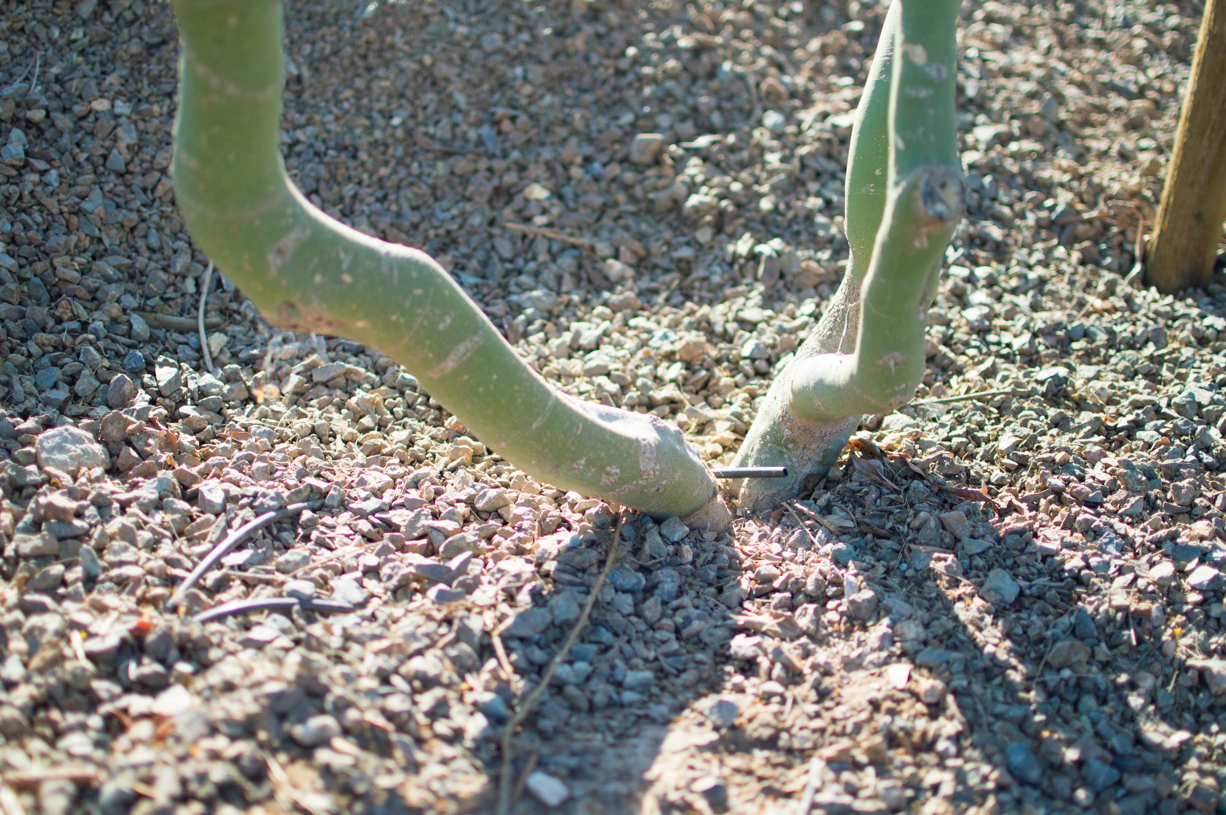
3. Broken limbs- can the tree be saved?
- Depends on the situation. Fast growing species generally have a better chance of recovering than slow growers.
- Can be subjective- do you want to look at an an ugly tree for 3 years until the tree fills in? No one is judging, it’s your property and if you want a new tree, plant a new tree. Please make sure you hire a certified arborist to help train the young tree for the best branching structure to help prevent limb failure in the future.
4. Overall decline in health and vigor of the tree
- This can be caused by a number of issues, but the first thing I would look for is irrigation efficiency. Generally when trees are planted, two drip emitters are installed within 12” of the trunk and then they are forgotten. As trees grow, they require a greater volume of water to thrive, especially non-desert trees. Moving and even adding drip emitters to the dripline of trees will help the delivery uniformity of water to each tree. Also, irrigation schedules should be adjusted monthly to meet the water requirements of each tree, which depends on time of year, temperatures and humidity levels and of course the size of the tree.
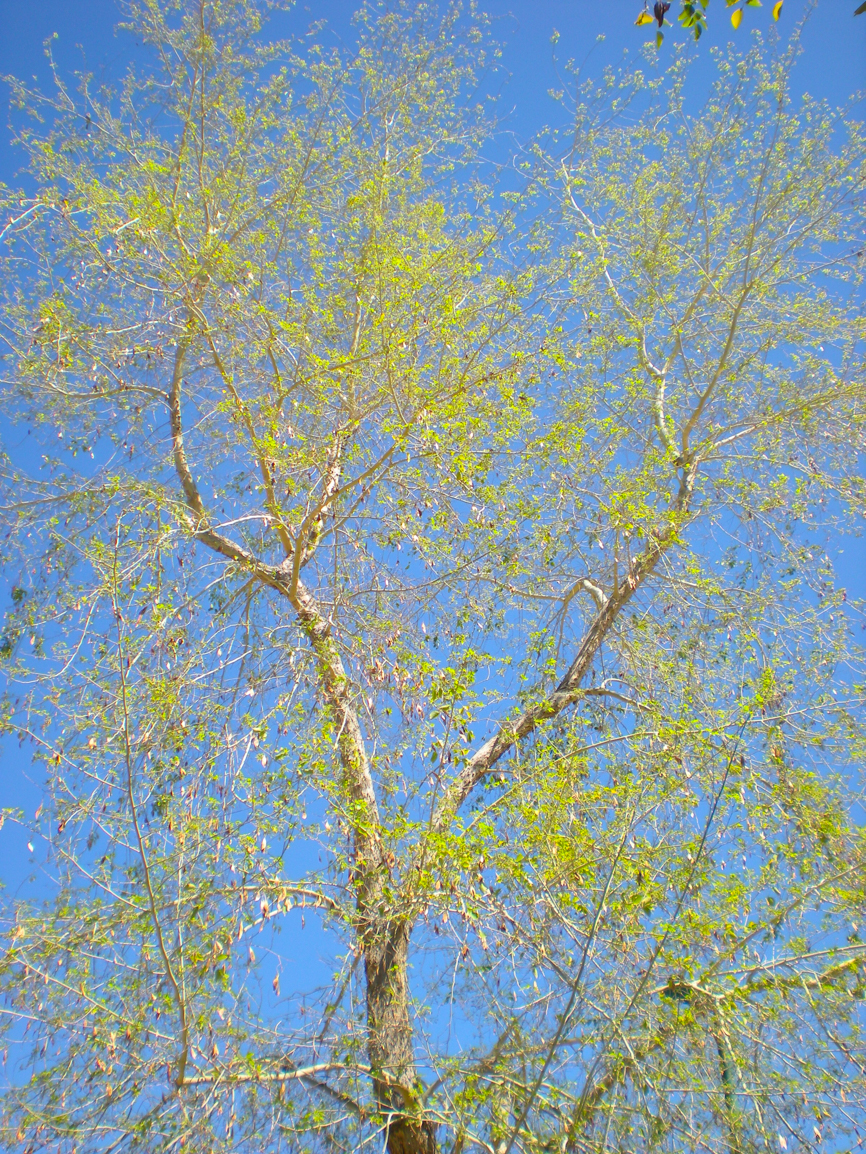
As we approach our summer season, I recommend inviting an ISA Certified Arborist to your property to inspect your trees. The arborist should not only look at the structure of your tree but also its overall health and make recommendations for how to improve the growing conditions of the tree. If you do need pruning, please, please please make sure the company your hire is properly insured to perform tree work, which is not the same coverage a landscaping company typically holds.
If you do have tree health care concerns, please feel free to invite me to your property for diagnosis. I am also happy to provide your referrals for reputable companies who will be able to perform the work.
